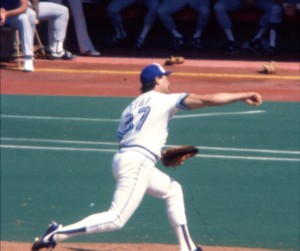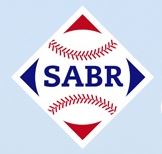NOTE: SINCE THIS POST WAS PUBLISHED, MAJOR LEAGUE BASEBALL HAS CHANGED A SEVENTH INNING ERROR (ON A BALL HIT BY DAVID ORTIZ) IN DARVISH’S MAY 10 GAME TO A BASE HIT – MEANING DARVISH’S NO-HITTER IS NOW CONSIDERED LOST IN THE SEVENTH INNING, RATHER THAN WITH TWO OUTS IN THE NINTH.
 Yesterday (May 10, 2014), Yu Darvish lost a no-hit bid with two outs in the ninth inning, as Boston Red Sox’ DH David Ortiz hit a ground ball single to right. The Rangers were up 8-0 at the time and Darvish – who had walked two and struck out 12 – was at the 126-pitch point (drat, those pitch counts). Given the lead and the pitch count, Rangers’ manager Ron Washington brought in Alexi Ogando, who retired Mike Napoli (fly out to left to end the game.) It left Darvish still waiting to achieve not only his first no-hitter, but also his first major league complete game.
Yesterday (May 10, 2014), Yu Darvish lost a no-hit bid with two outs in the ninth inning, as Boston Red Sox’ DH David Ortiz hit a ground ball single to right. The Rangers were up 8-0 at the time and Darvish – who had walked two and struck out 12 – was at the 126-pitch point (drat, those pitch counts). Given the lead and the pitch count, Rangers’ manager Ron Washington brought in Alexi Ogando, who retired Mike Napoli (fly out to left to end the game.) It left Darvish still waiting to achieve not only his first no-hitter, but also his first major league complete game.
And, it wasn’t the first time Darvish found himself in that situation. Last April 2, Darvish went into the ninth inning of a game against Houston with a 7-0 lead and a perfect game in progress. He started the inning in fine form, getting DH Jason Castro and catcher Carlos Corporan on ground outs (to SS and 2B, respectively). Then Astros’ shortstop Marwin Gonzalez hit the first pitch in his at bat (and Darvish’s 111th pitch) up the middle for a ground ball single. Again, Darvish’s day was done, as Washington brought in Micheal Kirkman to close it out (which he did with a single and a strikeout).
Losing a no-hitter or a perfect game with two outs in the ninth – a rarity? Not so much. (Losing both a no-hitter and a perfect game in such fashion, on the other hand, is rare – but has been done, see Dave Stieb below.) In MLB history, twelve perfect games and at least 48 additional no-hitters have been broken up with two outs in the ninth. (BBRT has found conflicting reports on a 49th such instance.) In addition, there have been five games in which a no-hitter was broken up with two outs in the ninth inning of a tie game, which then went extra innings, so even if the ninth-inning third out had been made, the no-hitter would not have been completed at the inning’s end.
Here’s a few near no-no stories.
Perfect Games Become No-Hitters
Looking further at those twelve broken perfect games, two of them did end up as no-hitters. On July 4, 1908, New York Giants’ hurler Hook Wiltse (who would win 139 games in 12 MLB seasons), retired the first 26 Phillies before hitting Philadelphia pitcher George McQuillan with a pitch on a 2-2 count. It was a scoreless game through nine, and Wiltse went on to pitch a hitless tenth (at least preserving the no-hitter) as the Giants won 1-0. On September 2, 1972, Milt Pappas of the Cubs had an 8-0 lead over the Padres – and a perfect game in progress – as San Diego batted in the top of the ninth. After retiring the first two batters, Pappas walked pinch hitter Larry Stahl on a 3-2 pitch. Pappas retired the next hitter, so while he lost the perfect game, he did save the no-hitter.
No-Hitter Lost with Two Out in Ninth in the World Series
Only one of the no-hitters lost with two outs in the ninth came in post season play. On October 3, 1947, Yankees’ right-hander Bill Bevens was on the verge of World Series history. Bevens went into the ninth with a 2-1 lead over the Dodgers and had yet to yield a hit (the Dodgers had scored one run in the fifth inning on two walks, a sacrifice bunt and a fielder’s choice). Bevens sandwiched a fly out and foul out around a walk to Dodgers’ center fielder Cal Furillo (Bevens’ ninth walk of the game), and so was just one out from a World Series win and no-hitter. That’s when the wheels came off. The dangerous Pete Reiser was sent in to pinch hit for pitcher Hugh Casey. Al Gionfriddo, pinch-running for Furillo, stole second and Reiser was walked intentionally – putting runners on first and second with two outs, the Yankees still with a one-run lead, the no-hitter intact and Cookie Lavagetto pinch hitting for Eddie Stanky (Eddie Miksis was also brought in to run for Reiser). Lavagetto doubled to right on Bevens’ second pitch, both runners scored and Bevens lost the no-hitter and the game.
Dave Steib’s Hard Luck
 The Blue Jays’ Dave Stieb took the mound on September 24 and September 30, 1988 (consecutive starts) against the Indian and Orioles, respectively, and produced the same result. In both games, he lost a no-hitter with two outs in the ninth (and a two-ball/two-strike count on the batter). Stieb did get two complete-game shutouts, 1-0 over the Indians and 4-0 over the Orioles. The games were his final two starts of the season, so he had the entire off-season to contemplate his bad luck. The following season (on August 4, 1989), Stieb found himself again on the brink, this time taking a perfect game in the ninth inning, holding a 2-0 over the Yankees. He started the inning as though ready to make history, striking out pinch hitters Hal Morris and Ken Phelps on nine pitches. Then the number-nine hitter, center fielder Luis Polonia, broke up the “perfecto” and no-hitter with a double to left. Second baseman Steve Sax followed with a run-scoring single, before left fielder Polonia grounded out to end the game. Stieb did finally get his no-hitter on September 2, 1990.
The Blue Jays’ Dave Stieb took the mound on September 24 and September 30, 1988 (consecutive starts) against the Indian and Orioles, respectively, and produced the same result. In both games, he lost a no-hitter with two outs in the ninth (and a two-ball/two-strike count on the batter). Stieb did get two complete-game shutouts, 1-0 over the Indians and 4-0 over the Orioles. The games were his final two starts of the season, so he had the entire off-season to contemplate his bad luck. The following season (on August 4, 1989), Stieb found himself again on the brink, this time taking a perfect game in the ninth inning, holding a 2-0 over the Yankees. He started the inning as though ready to make history, striking out pinch hitters Hal Morris and Ken Phelps on nine pitches. Then the number-nine hitter, center fielder Luis Polonia, broke up the “perfecto” and no-hitter with a double to left. Second baseman Steve Sax followed with a run-scoring single, before left fielder Polonia grounded out to end the game. Stieb did finally get his no-hitter on September 2, 1990.
Harvey Haddix’ Worse Luck
For a real hard luck story, there’s the Pittsburgh Pirates’ Harvey Haddix (who is not even on the “lost a perfect game or no-hitter in the bottom of the ninth” list). On May 29, 1959, Haddix took the mound against the powerhouse Milwaukee Braves (who had won the National League pennant the previous two seasons and came into the game again leading the league. Haddix retired the first 36 hitters, carrying a perfect game into the bottom of the 13th. Unfortunately, the Braves Lew Burdette, despite giving up 12 hits and fanning only two, had also held the Pirates scoreless. Felix Mantilla led off the 13th by reaching on error by Pirates’ third baseman Don Hoak. Slugger Eddie Mathews bunted Mantilla over to second, which led to an intentional walk to Hank Aaron, bringing up Joe Adcock. Adcock rapped a 1-0 pitch over the right field fence for what appeared to be a three-run home run. However, the Braves, in celebrating the tension-filled victory, forgot how to run the bases. Adcock passed Aaron between second and third and, after some deliberation, Adcock was called out – changing his three-run homer to a one-run double. And, on that drive, Haddix lost the perfect game, the no-hitter, the shutout and the game itself. But he did etch his name forever into baseball lore.
For same past thoughts on completed no-hitter, click here.





